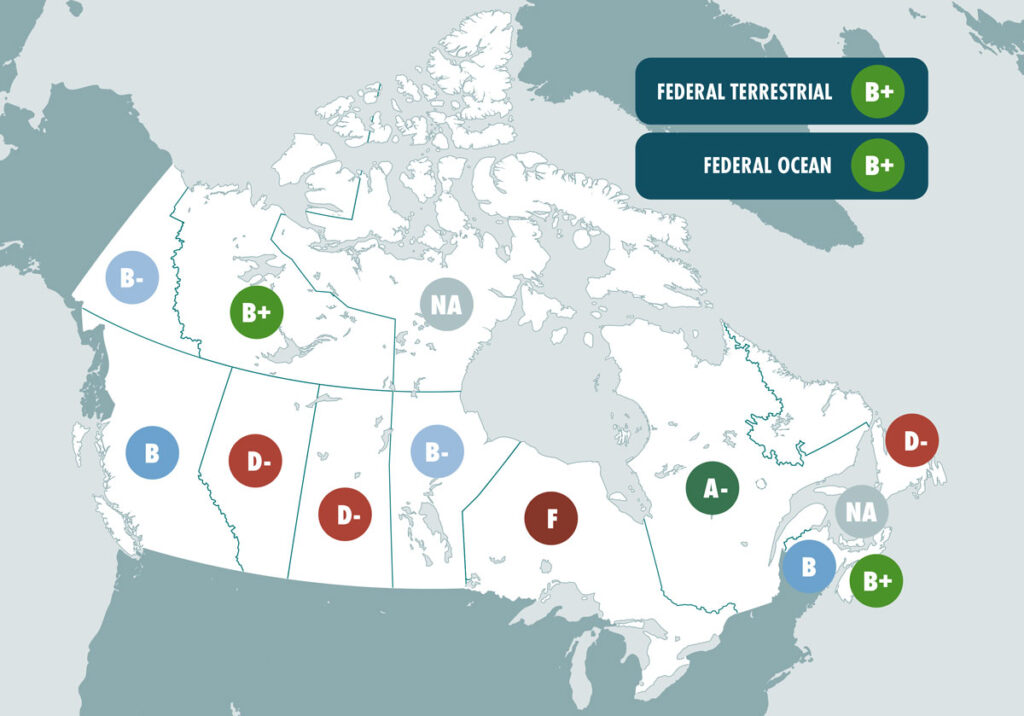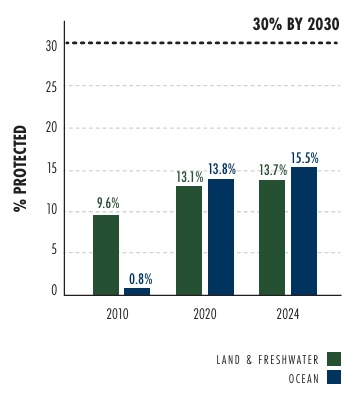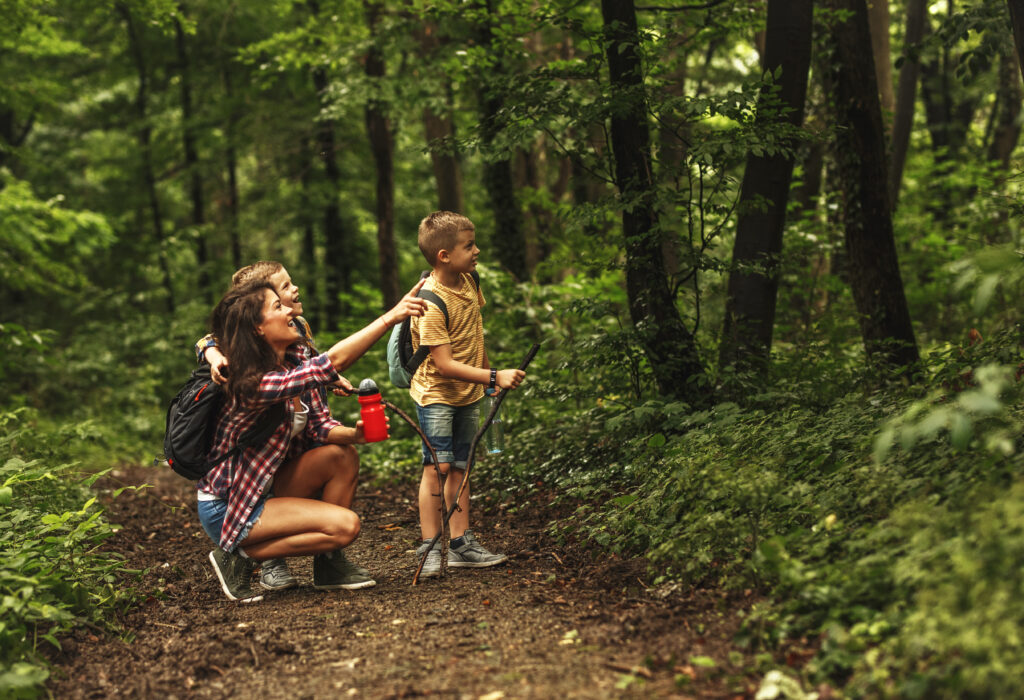CPAWS has taken Canada to school on conservation, and we are keen to share our latest report card on nature protection across the country.👨🏼🏫
With grades assigned to the federal, provincial, and territorial governments, our “On the Path to 2030 – A Report Card on Progress to Protect Land and Ocean Across Canada” highlights the class leaders and calls out the slackers. 🔍
It’s packed with details on how Canada can hit the crucial conservation goal of protecting at least 30% of our land and freshwater and 30% of the ocean by 2030. What it boils down to: class leaders must keep up the good work, and slackers must attend summer school! 🌳
In this first installment of a four-part blog series, we are looking at the leaders of the conservation pack, those that received a B+ or better. Since 2022, these governments have made strong commitments to advance core components of effective and equitable conservation. This includes interest in public participation, collaborating well with partners such as First Nations and the federal government, showing enthusiasm for expanding protected areas, and seeing the value of protecting nature as a key strategy for addressing the dual crises of climate change and biodiversity loss.
They set a great example for conservation for the rest of Canada. So, without further ado, here are your conservation leaders. 🐻

Quebec
Cue the applause for Quebec! 👏 Quebec has been excelling since 2021 and achieved an A- for its recent progress, the best mark for conservation in Canada.
With consistent effort, Quebec will remain a top performer in conservation. The province is a nature protection leader and role model, with a strong commitment to motivating communities to use their voice and be active nature allies, driving conservation projects across the province.
To keep up the strong grade, Quebec, be sure to maintain conservation funding despite budgetary constraints and prioritize caribou conservation. 🦌
Since our report card was completed, Canada and Quebec have signed an agreement to support the objectives of Quebec’s 2030 Nature Plan and Canada’s 2030 Nature Strategy. Congratulations, Quebec. This is very encouraging news. Let’s keep up the momentum.
Northwest Territories
With 15.8% of land and freshwater protected, Northwest Territories had one of the best conservation project outcomes led by Indigenous Nations to create massive conservation gains. NWT has maintained a strong B+ in nature protection since 2021, showcasing consistent dedication. ⛰️🌊
Since we filled out their report card, the territory has signed a Nature Agreement with the Federal Government, which is also very encouraging. However, NWT still has some overdue homework, especially related to land use planning, sitting on their desk that needs to get done. 🐻
By championing Indigenous-led conservation, protecting caribou habitat, and valuing nature-based climate solutions, NWT will keep up the good work to become a conservation star. 🦌🌿
Let’s aim for 100% completion next year.
Nova Scotia
Nova Scotia was one of the most engaged provinces over the past few years, often raising its hand to announce another protected area. With 62 new sites added, Nova Scotia was clearly a student who loves handing in assignments — and their grade increasing from B to a B+ shows it. 🌲📈
However, with so much on their plate, the province is still facing a pile of overdue work from 2013.
Nova Scotia, to keep climbing the conservation leaderboard, prioritize Indigenous-led conservation in all planning, hurry up with designating the backlog of protected areas from the 2013 plan, and work on a new plan to achieve your 20% land protection target. 💚 🌅
Keep pushing forward, Nova Scotia, by tackling that backlog. 🦭
Federal Land and Freshwater
The federal government shows great enthusiasm for expanding protected land and freshwater across the country and has supported Indigenous nations, provinces and territories and other partners to help deliver. But it sometimes forgets to budget for projects past the first phase. These considerations have resulted in a grade of B+ for the federal government, overall a strong result. ️🍁
Canada, if you want full marks, your conservation promises need to come with enough long-term funding to deliver. With 13.7% of land and freshwater protected, take action now to save nature and avoid cramming conservation homework in the final years before 2030. 🦫
Since our report card was compiled, the Government of Canada has signed agreements for nature protection with the Northwest Territories, Manitoba, and Nunavut, which is very encouraging.
The CPAWS community is cheering you on to reach Canada’s goal to protect 30% of land and freshwater by 2030! ⛰️
Federal Ocean
Canada has made great strides in marine conservation, with over 15% of our coast and ocean protected, keeping its mark at B+ from 2021 to 2024. 🐳
But, just like a kid who forgets to proofread their essay, Canada’s Marine Protected Areas (MPAs) could do with more attention to detail. Many of Canada’s MPAs have gaps in their rules and regulations that allow harmful activities to continue. This puts the quality and effectiveness of protection of these crucial ocean areas at risk.
Canada, it is critical that you renew funding to complete current projects and keep up the momentum to maintain or improve your mark for ocean and coastal conservation. 🍁
Don’t forget to:
- 🐠 Focus on quality and equity in ocean protection;
- 🦈 Better support Indigenous-led conservation;
- 🦦Implement basic minimum protection standards for all Marine Protected Areas;
- 🐬Work with coastal provinces and territories to make coastal and ocean protection more of a priority.
Conclusion
We are pleased with these provinces and territories that are leading the class on conservation across Canada.
Back in 2010, only 9.6% of land and freshwater in Canada and 0.8% of our ocean territory were under protection. Fast forward to 2024, and Canada was able to boost those numbers to 13.7% and 1.5%, respectively. These numbers show strong progress but also reveal how much work remains.
Good conservation takes time, and keeping the momentum going is key. We know through experience that creating protected areas, whether on land or in the ocean, is a complex process. This can only happen with thoughtful planning, community support and Indigenous leadership. It’s really important that the leaders keep putting in the effort, elevating their game, and acting as role models on protecting our nature in Canada.
Canada is at a crossroads. We have a lot of work to do to reach our conservation goals, and this requires funding. However, most funding is set to expire within the next year, which threatens progress. To reach its nature protection goal for the benefit of all Canadians, the federal government must extend conservation funding. Not just for one or two years but through 2030 and beyond.
You can help. Contact your local member of parliament and tell them you want to see funding commitments for nature protection. Secondly, vote for nature in the upcoming federal election.
Your voice and vote are critical for a greener, safer, healthier future.

When nature thrives, so do we.💚
Banner Photo: Northwest Territories, Garth Lenz
Other stories you might be interested in:




